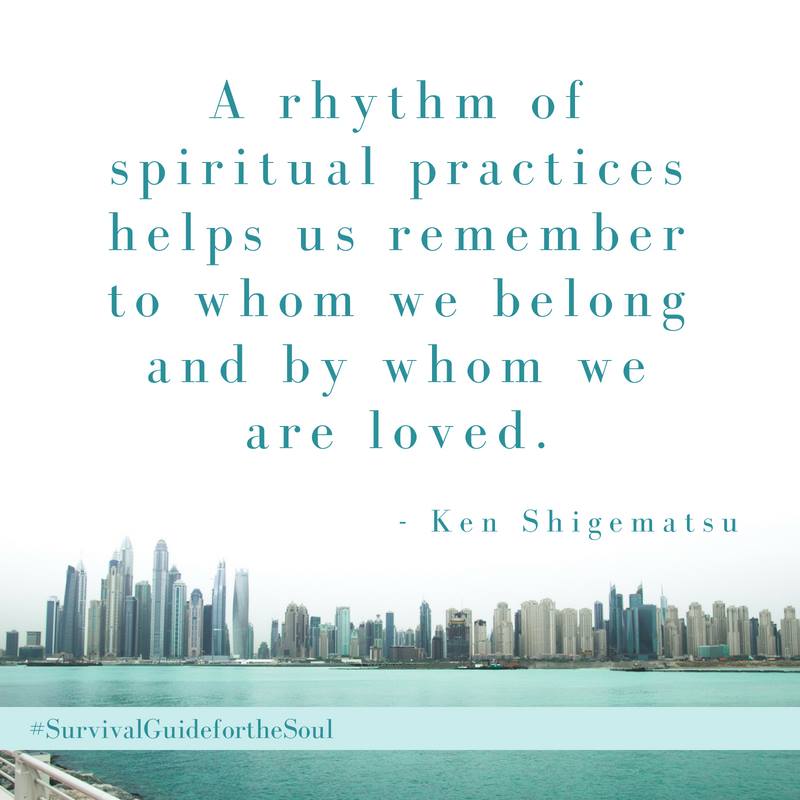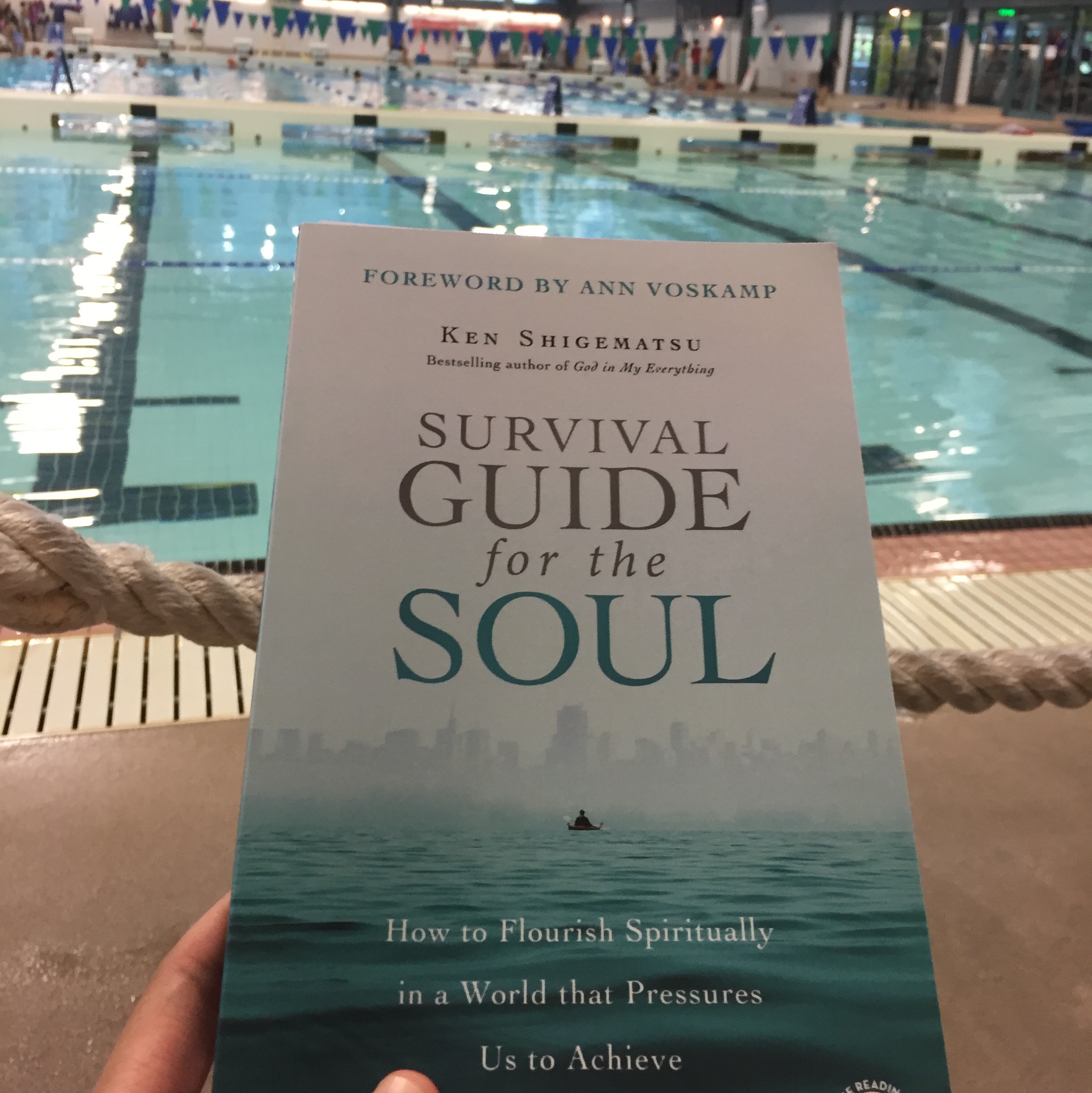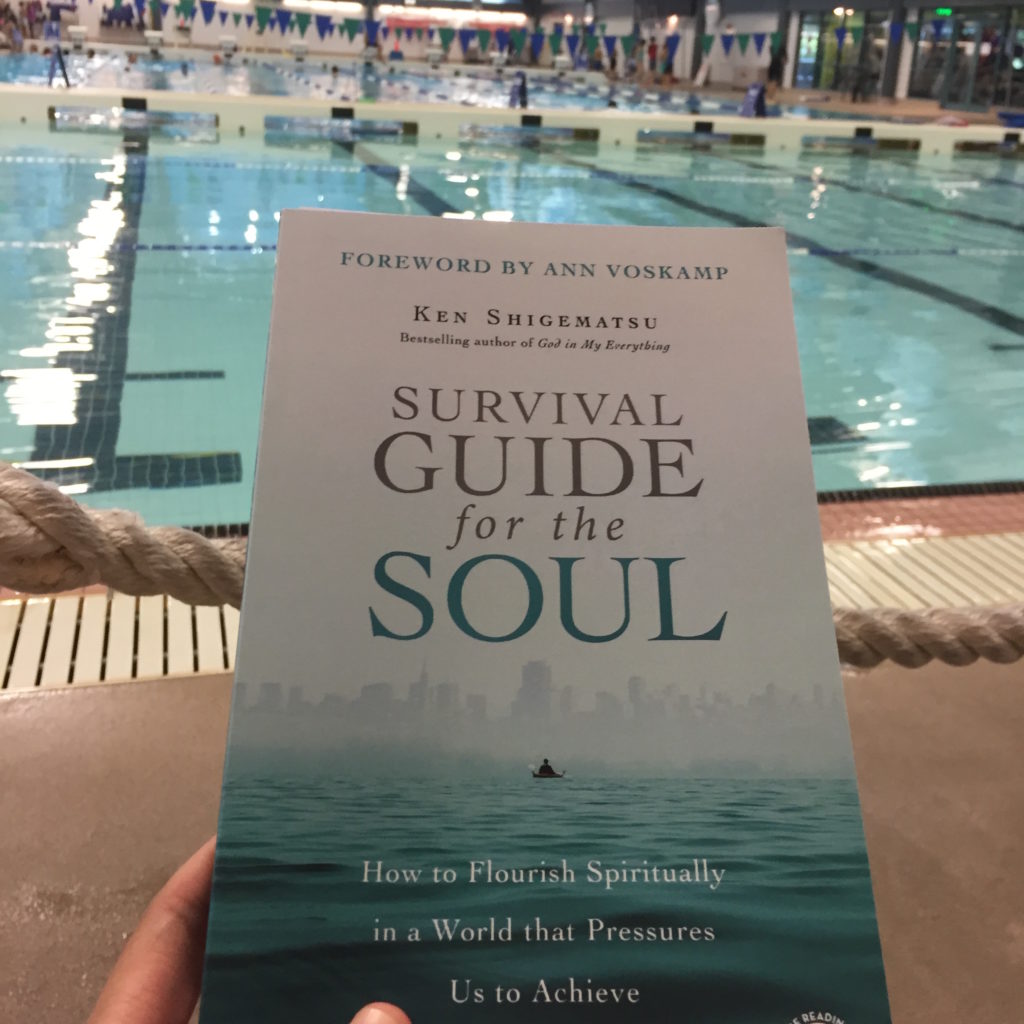Survival Guide for the Soul deepened my motivation to restart spiritual practices I’ve given up on and it gave me practical ideas on how to approach the practices differently. Ken’s book is filled with engaging stories and deep insights. I especially appreciated the variety of stories, from leaders in the past and present and “regular” people from Ken’s church community.
I received an Advanced Reading Copy of Survival Guide for the Soul as part of the book launch team. Ken Shigematsu was my pastor and mentor for many years. My wife, family, friends, and I really enjoyed listening to him speak. During a season of my life when I had a lot of public speaking engagements I remember asking him for speaking tips. He told me that it takes 3 minutes for an audience to internalize a point. In his talks he would say the point, repeat it a different way, and then tell a few stories to bring the point across. This gave everyone enough time to fully understand what he’s saying. This book is structured similarly.
The meat of this book is about spiritual disciplines and practices, but Ken approaches it in a fresh way. He starts by explaining the concept of the dual self, each part with its own drive. Striving Adam is the part of us that strives for success. Soulful Adam longs for connection with God and others. While we need Striving Adam’s drive and ambition to energize us to action, we also need Soulful Adam’s longing to build relationship, spiritual connection, and meaning in life.
Our current culture reinforces our Striving Adam, placing value and worth on achievements and productivity. Perhaps that is why most people’s Striving self dominates over their Soulful self. Growing up in the church, this is a message I’ve heard before. But Ken approaches this tension differently, arguing that “the path to true satisfaction is not the loss of our Striving Adam but the marriage of our ambition with the soulful satisfaction of being loved by God.” Being a fairly ambitious person, I was refreshed to hear Ken affirm both the Striving and Soulful parts of our life, stating the need for nurturing both.
 This book focuses on nurturing the Soulful part of us, which is easy to neglect in our driven culture. Ken says that while many of us may intellectually agree that God loves us, we often lack the experience of God’s deep love in our lives. It is this experience of God’s love that needs to be nurtured on a regular basis, to allow for the Soulful and Striving parts of us to be balanced.
This book focuses on nurturing the Soulful part of us, which is easy to neglect in our driven culture. Ken says that while many of us may intellectually agree that God loves us, we often lack the experience of God’s deep love in our lives. It is this experience of God’s love that needs to be nurtured on a regular basis, to allow for the Soulful and Striving parts of us to be balanced.
In fact, Ken states that nurturing our Soulful self will make our Striving self more productive because we move from working to prove our worth to working to serve others. He shares the example of how his ministry work became more fruitful when he started working less, moving from 70 hours a week as a single, to working less as a married person, to even less after having a son.
At this point in the book I was fully convinced and motivated to nurture my Soulful self. But how? Ken’s answer is to develop rhythms of spiritual practice in your life. What is a spiritual practice? Ken says, “anything that makes us come fully alive is a spiritual practice.”

Ken states a study of people’s temperaments and their preferred spiritual practices, based on four historical Catholic teachers. Depending on your temperament, you will have a different approach to experiencing God.
Here’s a summary of the 4 types:
1) Ignatian (named after Saint Ignatius of Loyola)
40% of North Americans are “very practical, have a strong sense of responsibility and love to serve in tangible ways… they like organization and structure. They also tend to prefer a more consistent, ordered approach to God.”
2) Franciscan (named after St. Francis of Assisi)
38% of the population “connect most deeply with God as they walk in nature, enjoy beautiful art or music, listen to inspiring stories, or savour a cup of coffee and good conversation with a friend. Rather than favouring structure, they tend to prefer a more spontaneous approach to God.”
3) Augustinian (named after St. Augustine)
12% of North Americans are “philosophical and enjoy contemplating the meaning of God and their lives… they represent more than 50% of those who schedule time to get away on spiritual retreats.”
4) Thomistic (named after St. Thomas of Aquinas)
10% of people “love to use their minds as a gateway to God. They relish the study of Scripture, theology, and substantive Christian books. A disproportionately high percentage of pastors, in comparison to the general population, are Thomistic in their spirituality. This helps explain why many pastors frequently stress the importance of Bible study and theological learning as a way for people to grow in their faith.” I laughed reading this, thinking of all the pastors I know that promote the importance of regular Scripture reading.
The rest of the book covers 7 spiritual practices, each with it’s own chapter:
- Meditation – Listening to the Music of Heaven
- Sabbath – The Rhythm of Resistance
- Gratitude – Savouring God’s Gifts
- Simple Abundance – Why Less is More
- Servanthood – Pouring Ourselves Out for Others
- Friendship – The Art of Mutual Encouragement
- Vocation – Discerning Our Sacred Calling

For myself, I have incorporated a few of these spiritual practices into my life as I have found them to be meaningful, in particular Sabbath, Friendship, and Vocation. Reading these chapters affirmed the importance of these practices in my life and energized me to continue practicing them. I found few insights into ways to incorporate these practices into my life I have not tried before, which I’m excited to try.
There are other spiritual practices I have tried but have not found meaningful. I have practically given up on these practices (meditation and servanthood) and only sporadically try them. Reading these chapters helped me understand they “worked” and how they would nurture my Soulful self. Reading the stories were particularly helpful in visualizing how these practices were lived out. After reading the chapters I was motivated to try these practices again.
Other spiritual practices I have not thought about much, like gratitude and simple abundance. Reading these chapters opened my eyes to how these practices could be life-giving.
I loved this book and have even pre-ordered a copy for a dear friend of mine. Survival Guide for the Soul would make a great gift and would also be helpful for small groups to read and discuss together. The stories make it easy and engaging to read. But what I appreciated most was that the book stirred my soul, deepening my desire to nurture my Soulful self.


